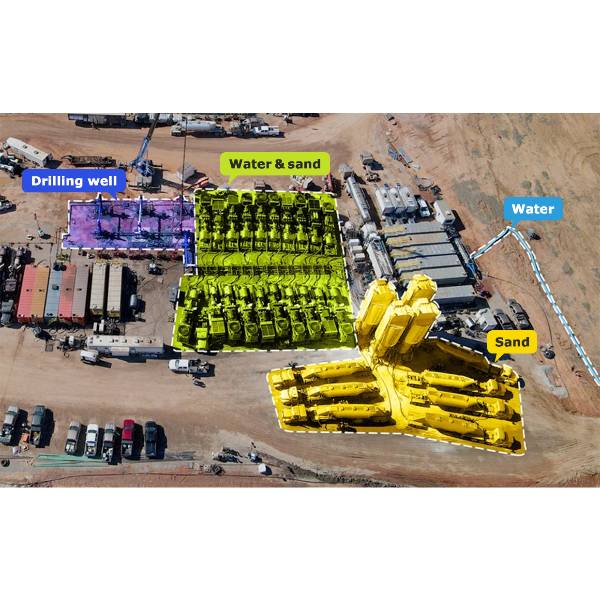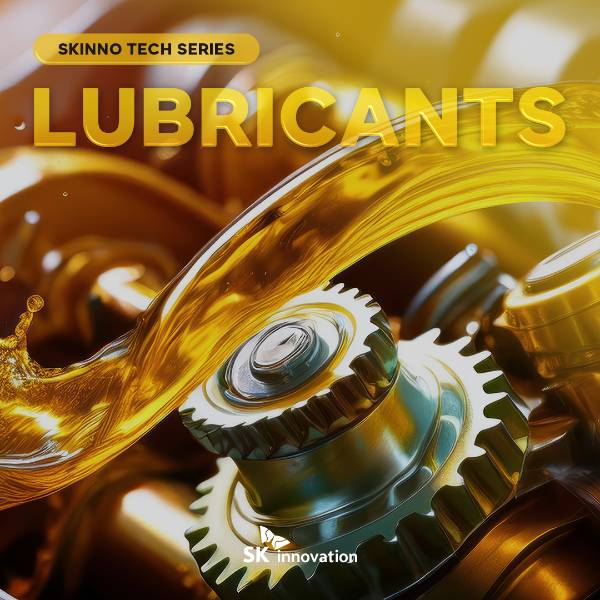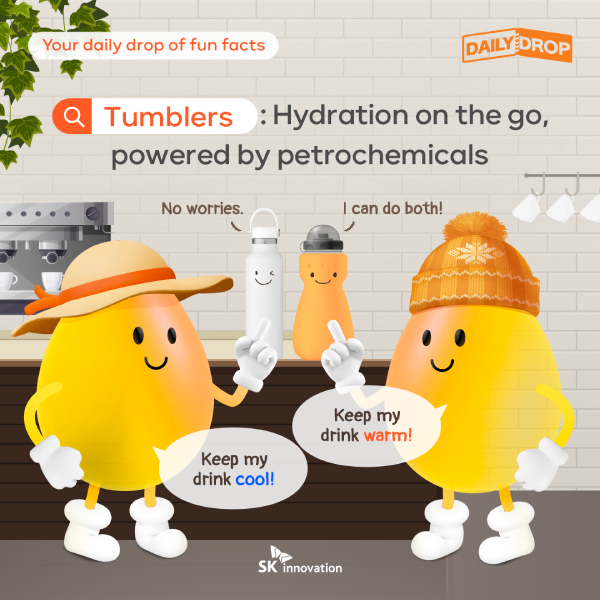 Trends & Reports
Trends & Reports
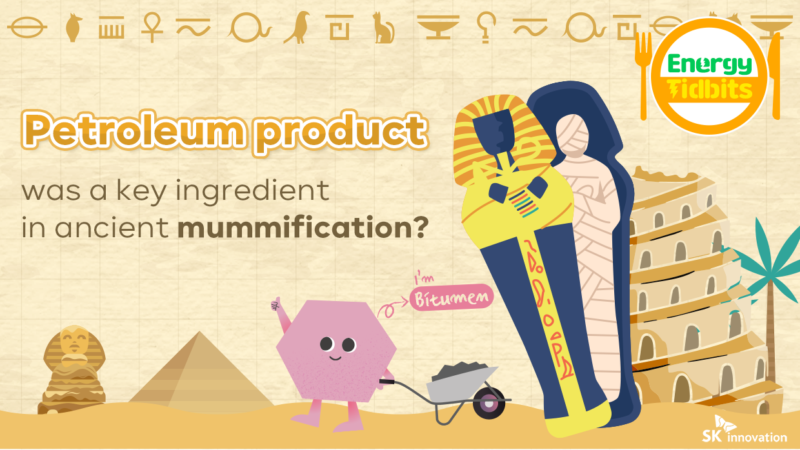
The Ancient Egyptians believed that the souls of the deceased would face judgment before Osiris, God of The Dead, and based on their deeds in life, they could be resurrected and attain eternal life in the afterlife. Thus, preserving a corpse as a mummy was known to be a way to hope for resurrection in the underworld.
To permanently preserve dead bodies, the Ancient Egyptians used bitumen. Bitumen is natural asphalt formed when petroleum seeps out to the surface, forming pools, and the volatile substances evaporate, leaving the residue behind. It was used as a preservative to remove moisture from dead bodies and prevent decay.
| From Sumer to Rome, the beginning of civilization crafted with petroleum
Petroleum has always played a crucial role in the lengthy history of human civilization’s development. As the Ancient Egyptians discovered natural asphalt from the Dead Sea, and the Romans found it in lakes, they naturally became aware of its existence. Particularly, in the Persian Gulf region, which nowadays holds a significant percentage of the world’s oil production capacity and reserves, bitumen was used for various purposes from long ago.
Around 3000 BC, the Sumerians in Mesopotamia made statues from asphalt derived from petroleum, and there are records from ancient Rome that petroleum was used not only for road construction but also for waterproofing roofs and ships. Additionally, records indicate that the Babylonians melted and applied bitumen on both sides of rampart walls to prevent flooding from the Euphrates River. Even today, visitors to the Babylonian Ruins can find dried bitumen on the roads, which confirms that in the past the Babylonians did lay bricks on the ground and then apply bitumen on them.
The Bible also refers that Noah used bitumen to waterproof and bind the giant ark he built. In the Book of Genesis, bitumen was used to make bricks and mud more solid during the construction of the Tower of Babel.

(Left) “Noah’s Ark” by Edward Hicks (1846) (Source: Wikipedia) / (Right) “The Tower of Babel” by Pieter Bruegel (1563)” (Source: Wikipedia)
| Petroleum, once a panacea in both Eastern and Western cultures
Bitumen was called mūmiyâ in Persian, in which mūm means “wax”. As mentioned earlier, the ancient Egyptians used bitumen as a preservative, applying it to the cloths wrapped around dead bodies to prevent decay. A corpse embalmed in this way was called mūmīya in Arabic. The bandages wrapping the corpses – mūmīya in Arabic, were coated with rare herbs, medicinal substances, and bitumen – mūmiyâ in Persian. Since the words mūmīya and mūmiyâ sound similar, it is said that Western Europeans who encountered Egyptian civilization after the 11th century collectively called the wrapped corpse and the special substance that flowed from that corpse “mummy”. Rumors then spread that the preserved mummies themselves had medicinal properties, and by then, powder scraped from mummies was considered a panacea, commonly kept in most homes.
Furthermore, records from the 5th to 6th centuries during China’s Northern and Southern Dynasties indicate that petroleum was used for healing diseases, including dental care for elders. Ancient Persians and Sumatrans in the 10th century also believed in the medicinal benefits of petroleum. It is also known that Charles V of the Holy Roman Empire used petroleum as a remedy for gout.
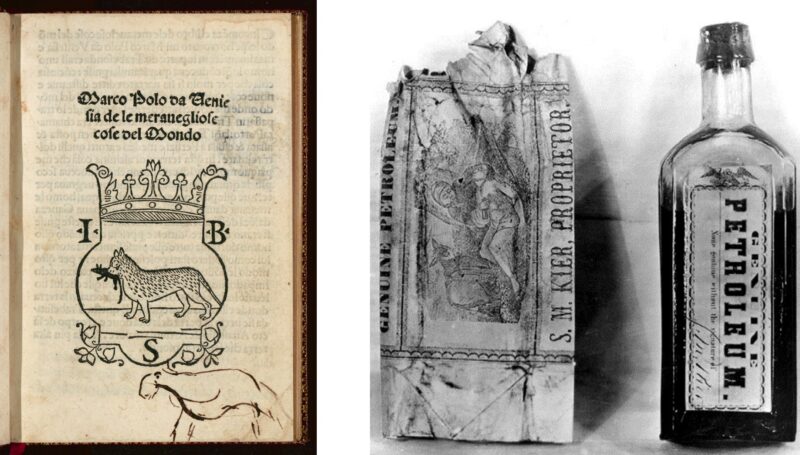
(Left) Polo, M. (1496). The travels of Marco Polo (Trans.). [Re-edition] (Source: Wikipedia) / (Right) Petroleum ointment by “Samuel Martin Kier,” who founded the 17th-century American petroleum refining industry (Source: Wikipedia)
The Venetian explorer Marco Polo (1254-1324), who travelled through Asia in 13th century, mentioned the oil fields of Baku in the Caspian Sea in his book The Travels of Marco Polo. “This oil is not good to eat; but it is good for burning and as a salve for men and camels affected with itch or scab,” he stated. Additionally, it is reported that Native Americans also used petroleum as a part of their traditional remedies. In the 17th century, Samuel Martin Kier, who initiated the petroleum refining industry in America, developed a jelly-type ointment similar to petroleum jelly “Vaseline” after witnessing Native Americans using petroleum medicinally. Long before petroleum was developed into various medicines and ointments, including aspirin, humanity had already discovered its medicinal value.
| The vital role of petroleum in wars
Meanwhile, there are historical accounts of petroleum being used in weapons. Around 480 BC, it is widely believed that the Persian military forces wrapped their arrows with cloth soaked in petroleum to make incendiary arrows during their attacks on the Athenians. Later, in China during the periods of the Five Dynasties and Ten Kingdoms and the Song Dynasty (early 10th century), petroleum was used as fuel for a type of flamethrower known as “Meng Huo You Gui (猛火油櫃).” The famous military treatise from the Song Dynasty, “Wujing Zongyao (武經總要)”, provides detailed instructions on how to make and use this weapon. According to the text, Meng Huo You Gui was a chest that emitted continuous flames that would not be extinguished even with water. It is speculated that the main component of this weapon was naphtha, which is used today as a basic raw material in petrochemicals.
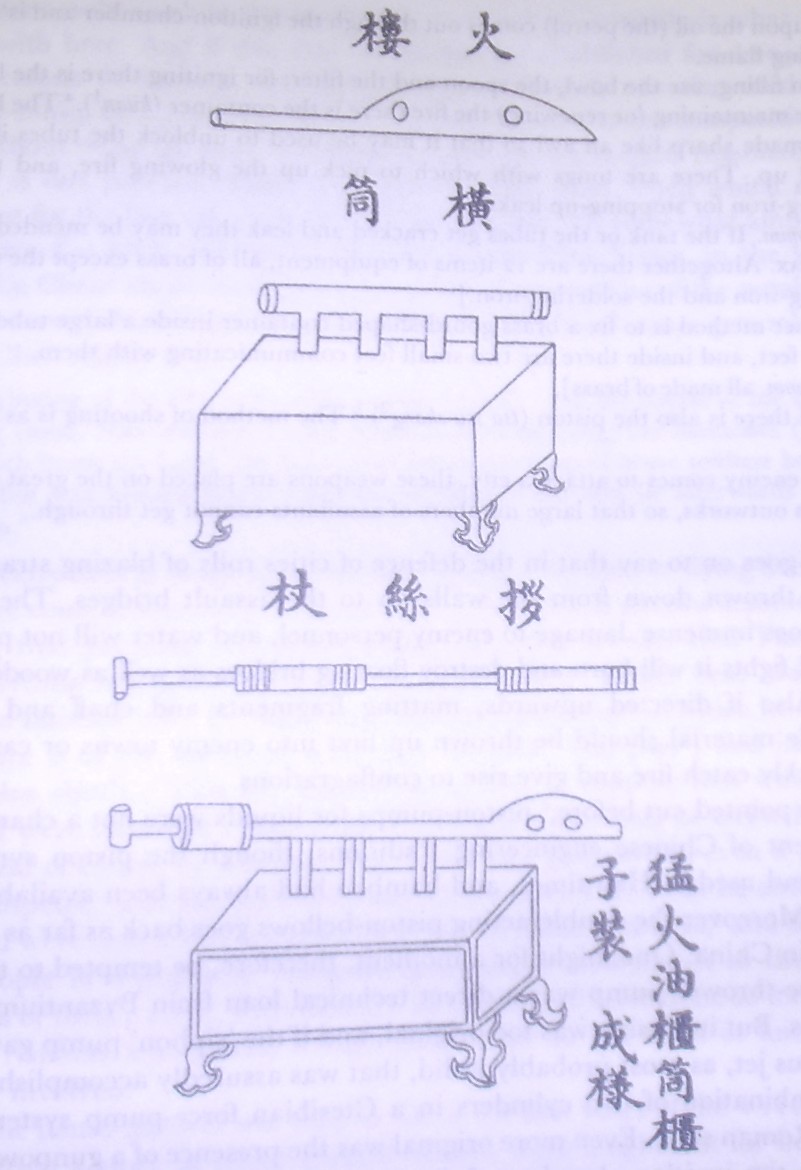
A Chinese flamethrower from the Wujing Zongyao manuscript of 1044 AD, Song dynasty (Source: Wikipedia)
| From whaling to oil drilling, how petroleum helped prevent whale extinction
Fossil fuels, including petroleum, began to be used around 1850 before industrialization. Before this, plant-based oils, such as linseed oil and olive oil, were primarily used for lighting lamps, and whale oil was also an important fuel source. Specifically, “sperm oil,” extracted from the head cavity of sperm whales, possessed ideal properties for lubrication and was extensively used as a machine lubricant during the Industrial Revolution. Herman Melville’s Moby Dick, published in 1851, captures this era. The epic tale of a massive sperm whale, which became a cornerstone of American literature, was inspired by the true story of the whaling ship Essex, which was sunk by a sperm whale attack, and Melville’s own experiences as a whaler.
However, indiscriminate over-hunting led to a drastic reduction in whale populations and a corresponding rise in the price of whale oil. Petroleum emerged as an alternative solution to these problems. As they sought new fuel sources, people turned their attention to the oil industry. Finally, in 1859, Edwin Drake developed the first commercial oil well in Titusville, Pennsylvania, reducing the need for whaling. It could be said that petroleum played an important role in saving whales from the brink of extinction at that time.

South Sea Whale Fishery, lithographic print painted by Garnerey, engraved by E. Duncan, published 1835 (Source: Wikipedia)
Petroleum is the key energy resource that went down in human history through its various uses in architecture, medicine, weaponry, and fuel. In the next episode of Energy Tidbits, we will explore in detail the evolution of petroleum extraction methods up to the present day.










 Youtube
Youtube Facebook
Facebook Instagram
Instagram Linkedin
Linkedin








